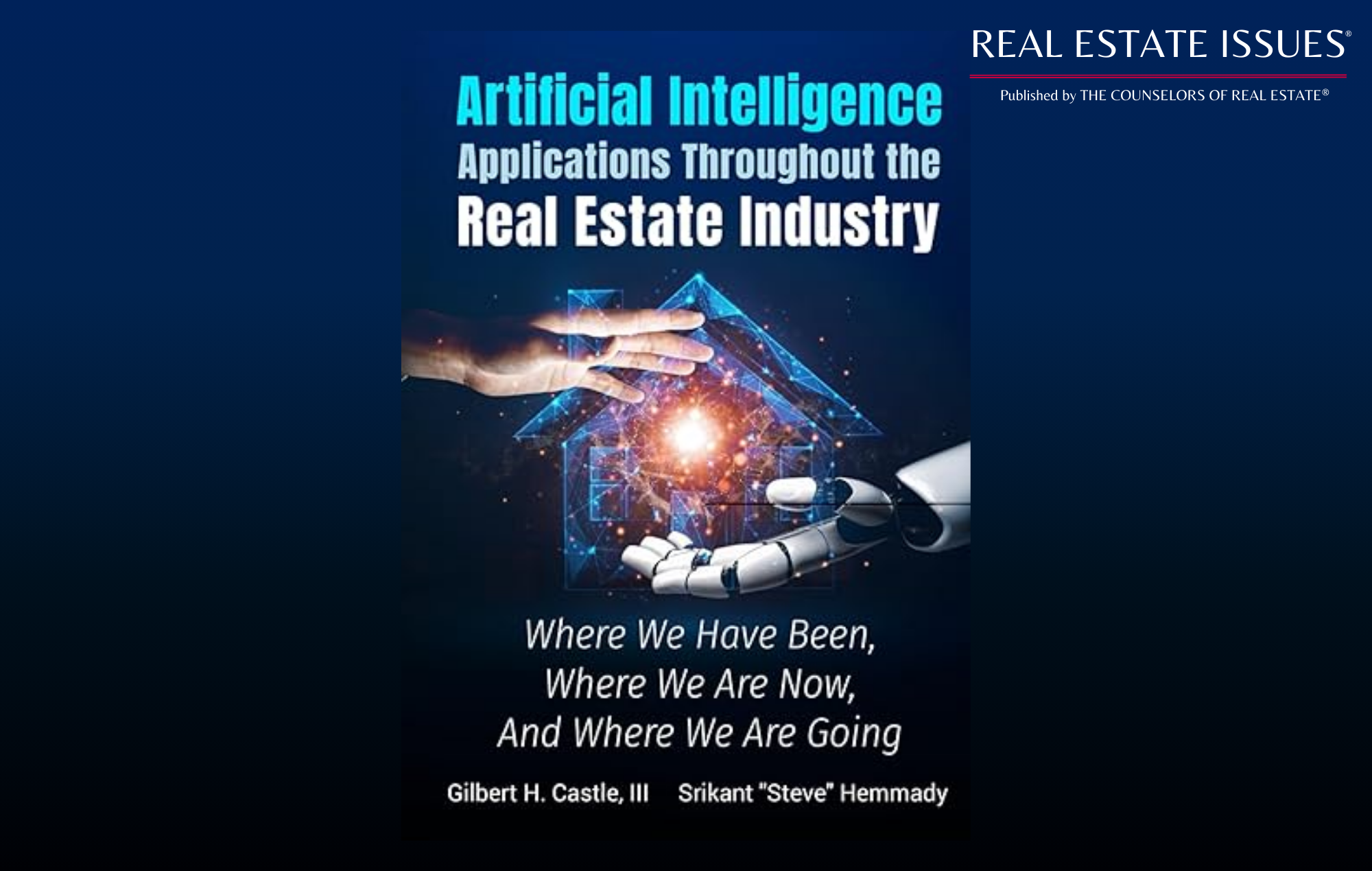Artificial Intelligence Applications Throughout the Real Estate Industry: Where We Have Been, Where We Are Now, and Where We Are Going
This book is an outstanding contribution to both the real estate and Artificial Intelligence (AI) sectors. It particularly hit home for me because of its in-depth definition of Artificial Intelligence and Real Estate which enabled a clear logical presentation that is something the reader, and the industry can evolve with over time.
For example, how can you determine how to apply AI unless you really understand the different types of AI. In Chapter 2, the authors introduce seven current types of AI systems: Reactive Machines, Limited Memory Machines, Theory of Mind, Self-Aware AI, Artificial Narrow Intelligence, Artificial General Intelligence, and Artificial Super Intelligence. Each type has different capabilities, strengths, weakness and future potential, all of which are discussed. And for the more academically inclined, Chapter 1 sets the context for where we are today, tracking the evolution of AI milestones from Ancient Greece to the present.
Equally important, how can you answer the question of how AI will impact “real estate” unless you can clearly identify what part of the real estate sector you are talking about. The answer to the question will vary based on property type, your type of business/function in real estate—brokerage, appraisal, asset management, investment, finance, construction, development, tenant management, property management, disposition, etc. A strength of this book is that the authors answered the question about how AI will affect real estate 42 times. They cover residential and commercial, brokerage, lending, investment and market analysis, appraisal management, construction management, architecture and design, title and closing services and more. There are also special sections on property data analytics, geospatial applications, and education.
The book’s strength in comprehensive coverage of the real estate sector is also its primary weakness, that each of the 42 sectors of the real estate industry are not covered in as much depth as they might be, or a as specialist in those sectors might want. My internet search of books focused on real estate and AI found a few dozen titles, but none that provided the comprehensive framework that this book provided. Most were focused on a particular topic like brokerage, data analytics, deal finding, investment and in many cases were just general books about AI and business. For senior executives, or people that want to become senior executives, and students and educators, this book provides a foundational understanding of AI and real estate which I have not seen to date.
While the book is not deep in all 42 of the real estate functions it covers, it provides a comprehensive listing of over 800 companies producing 1000 AI products/services. These companies and products are cross referenced to the 42 real estate functions: i.e. leasing, development, data analytics, brokerage, lending, etc. Company websites and product names are provided. These listings are accompanied by comprehensive referencing, many with live links in the Kindle version of the book, by chapter and subchapter.
Finally, the authors are not shy in providing forecasts and predictions about the future, with all of Part III: What Does the Future Hold? addressing AI generally, real estate AI specifically, and companies in the Western world and India. They also have a whole chapter on whether AI is a friend or foe (or both) and finish the book by looking at potential positive and negative consequences of AI in real estate.
The co-authors and distinguished Technical Advisory panel are another strength of the book. As the leaders in the application of Geographic Information Systems and other technologies related to real estate, they have grappled with technology and real estate for over 40 years, an excellent base from which to assess this new “business changing technology”. With foundations in the US and India, authors and advisors bring varied perspectives to the topic from two of the world’s leading AI nations.
The book is available in hardback and digitally through Amazon. The digital version sells for $9.99—the Kindle version—and has active links for all sources. The Amazon URL is https://www.amazon.com/Artificial-Intelligence-Applications-Throughout-Industry/dp/B0D9SWLMFB/






